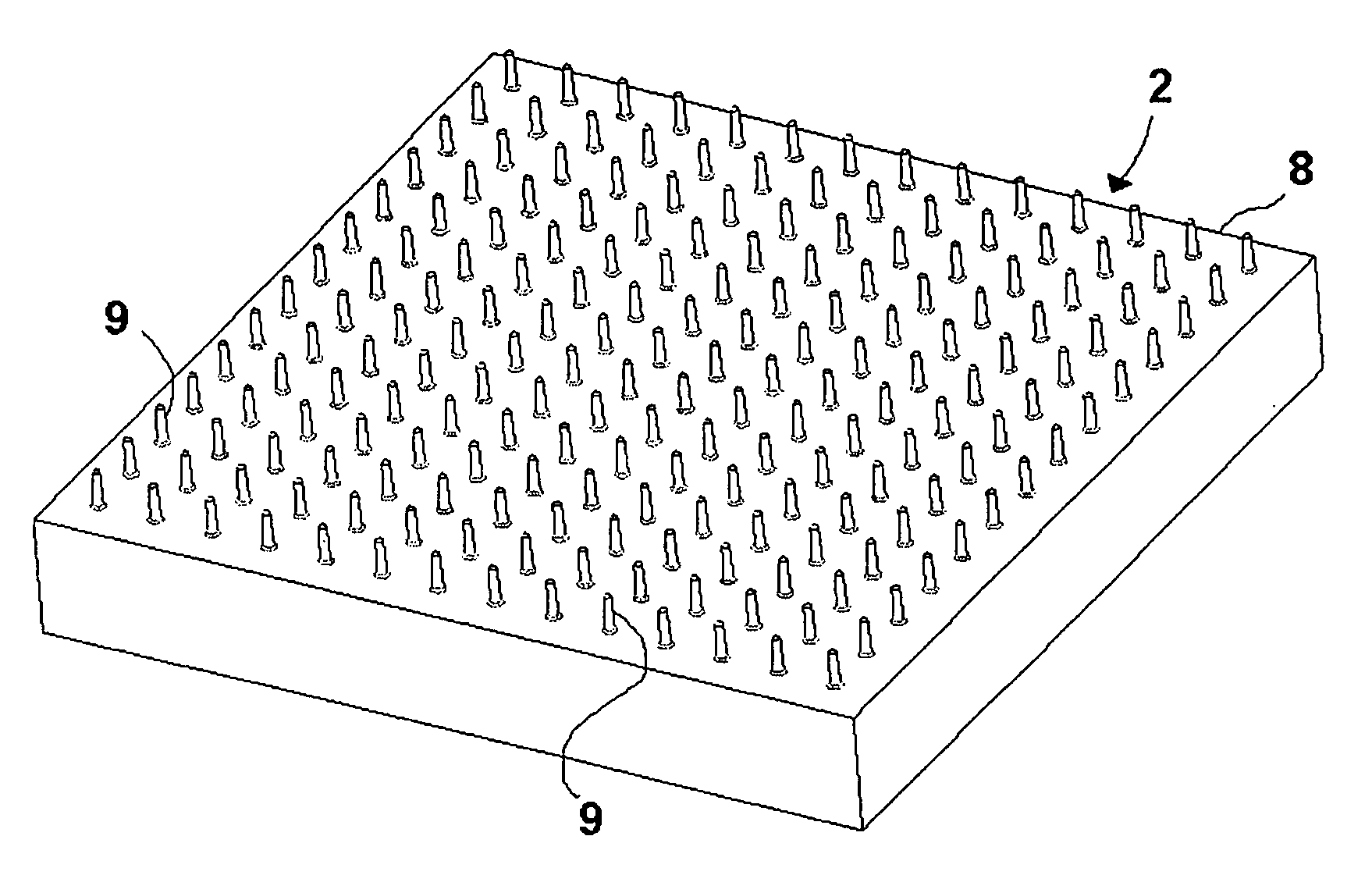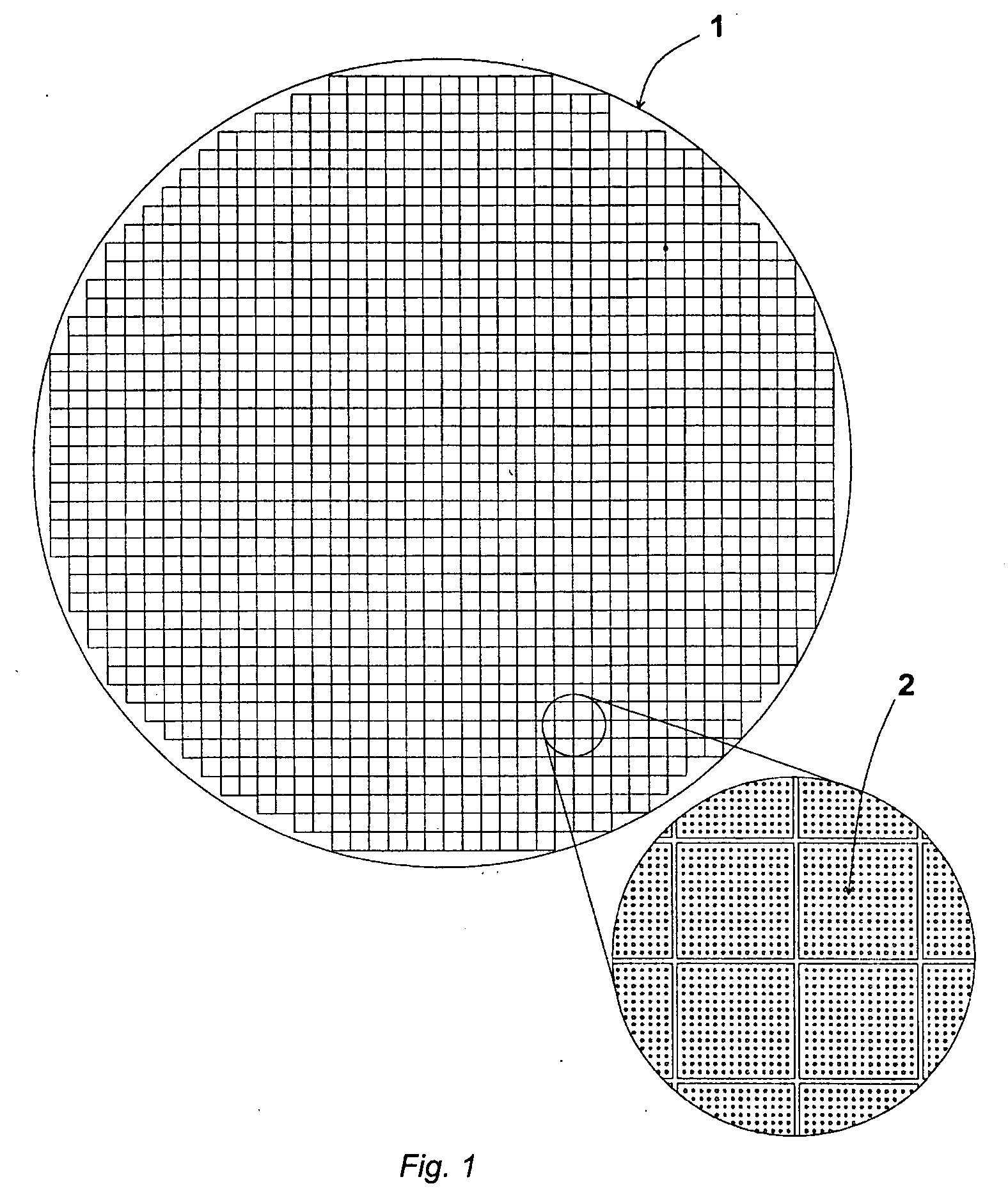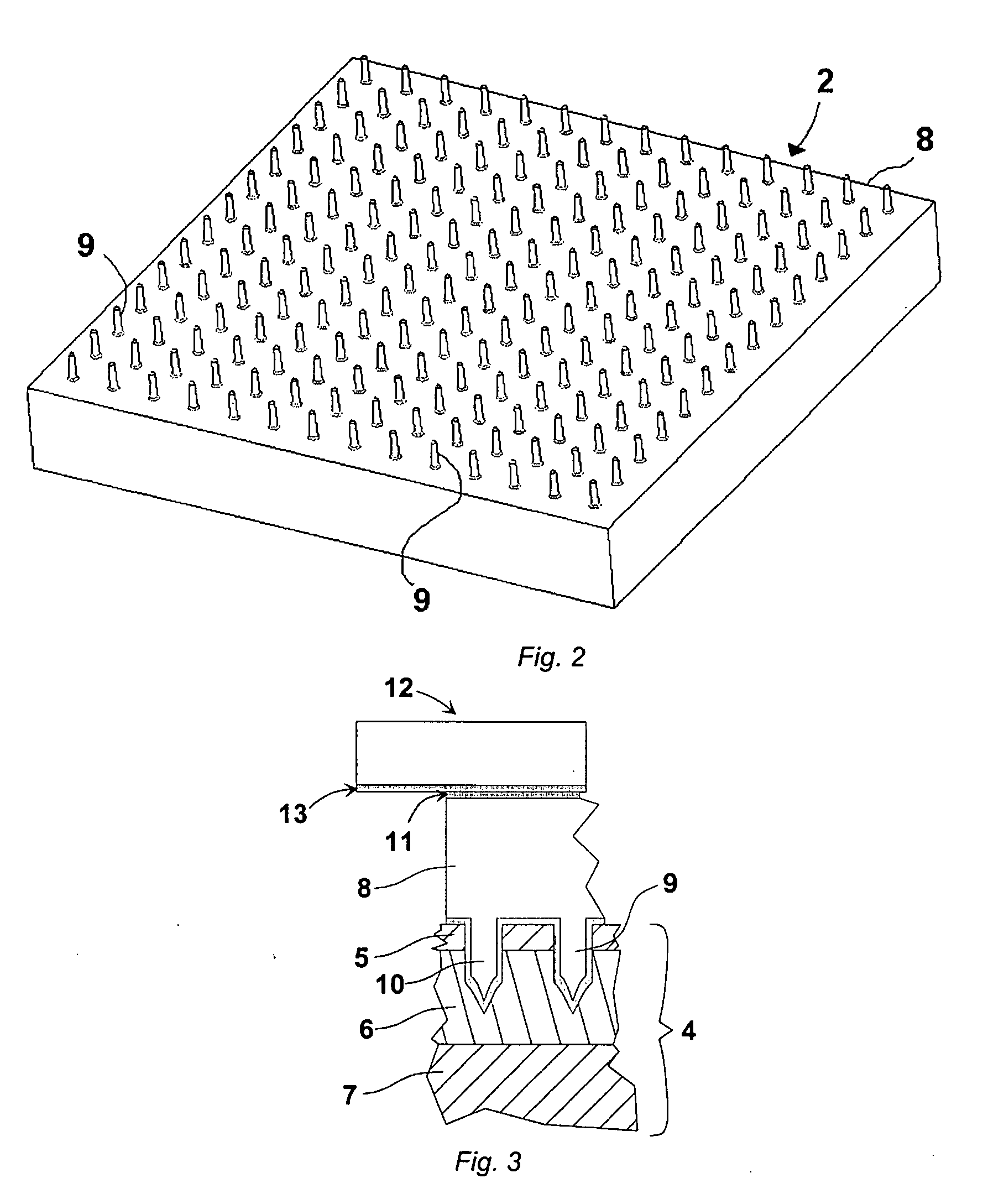Biopotential sensor
a biopotential sensor and sensor technology, applied in the field of medical sensors, can solve the problems of difficult data signal acquisition, high electrical impedance of the outermost layer of the skin, and difficulty in obtaining data signals
- Summary
- Abstract
- Description
- Claims
- Application Information
AI Technical Summary
Benefits of technology
Problems solved by technology
Method used
Image
Examples
Embodiment Construction
[0014]FIG. 1 shows basic steps of the manufacture of the sensor of the invention. Micromechanic structures are manufactured by etching a material, for example silicon, into the desired shape. This allows the manufacturing of complex structures with extremely small dimensions. The spikes in the biopotential sensor of the invention are etched on a silicon wafer 1, which is thereafter coated with conductive substances to make a suitable skin interface. In order to avoid having to coat each sensor separately, the entire wafer is coated at once. After the coating steps the wafer 1 is diced into sensors 2. This results in a “cube” having a carrier 8 and spikes 9 extending from the top surface of the carrier. The top surface of the carrier and the surfaces of the spikes are coated with a conductive material but the sides are bare Si. Said “cube” formed sensor structure is clearly shown in FIG. 2. The upper edges can be rounded or chamfered to make the coatings reach further down the sides ...
PUM
 Login to View More
Login to View More Abstract
Description
Claims
Application Information
 Login to View More
Login to View More - R&D
- Intellectual Property
- Life Sciences
- Materials
- Tech Scout
- Unparalleled Data Quality
- Higher Quality Content
- 60% Fewer Hallucinations
Browse by: Latest US Patents, China's latest patents, Technical Efficacy Thesaurus, Application Domain, Technology Topic, Popular Technical Reports.
© 2025 PatSnap. All rights reserved.Legal|Privacy policy|Modern Slavery Act Transparency Statement|Sitemap|About US| Contact US: help@patsnap.com



